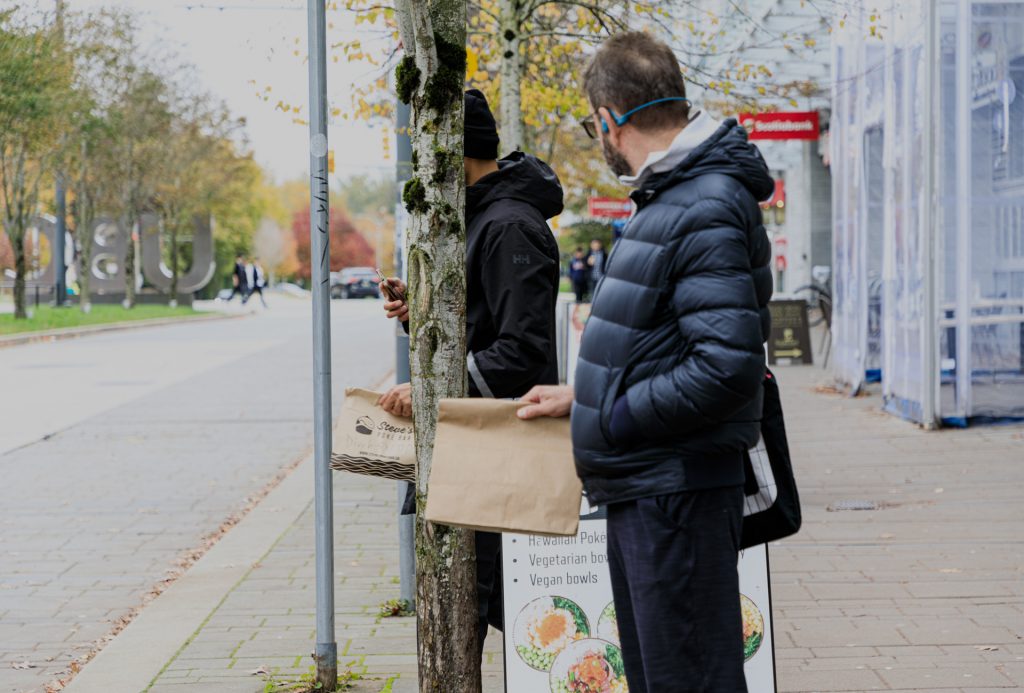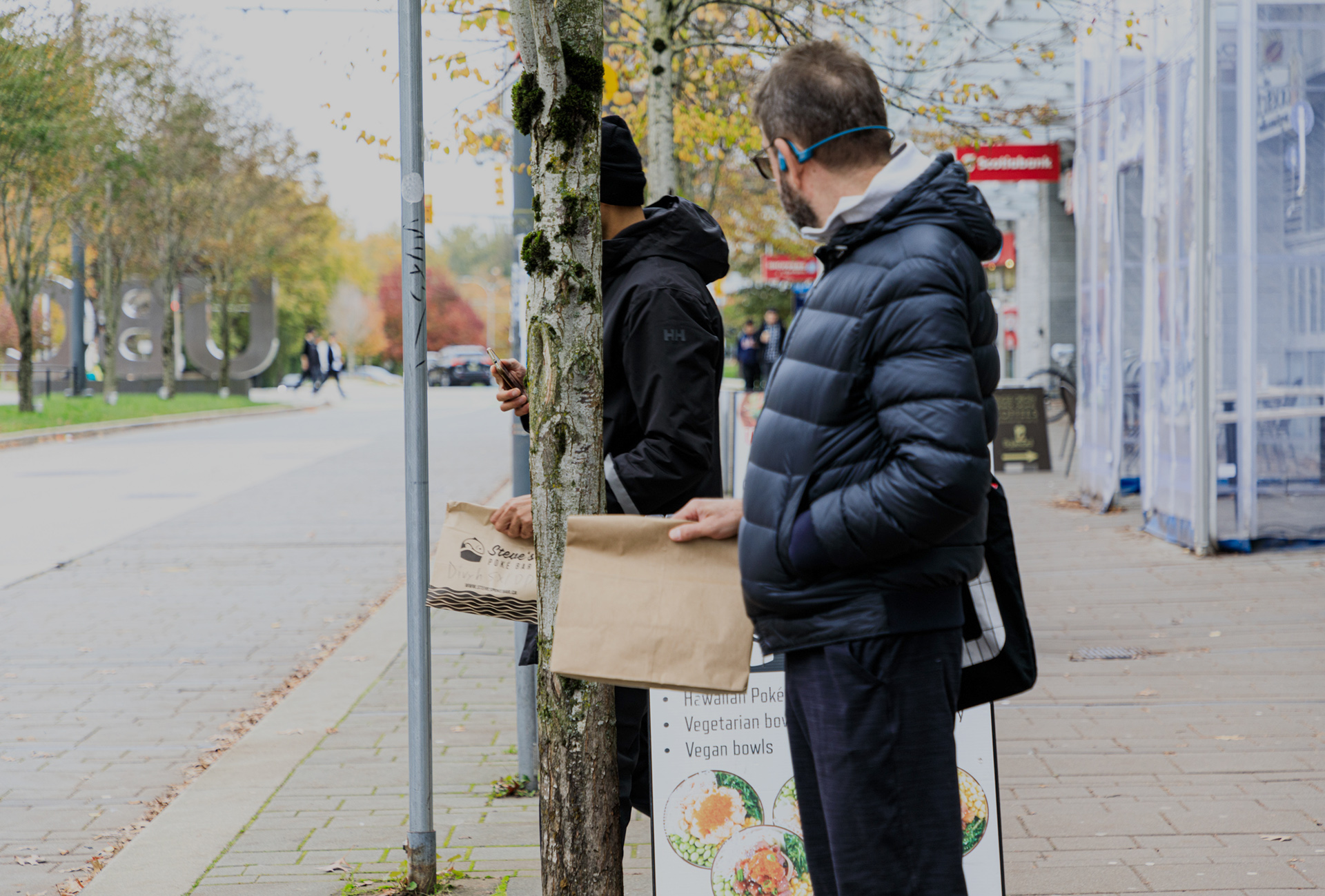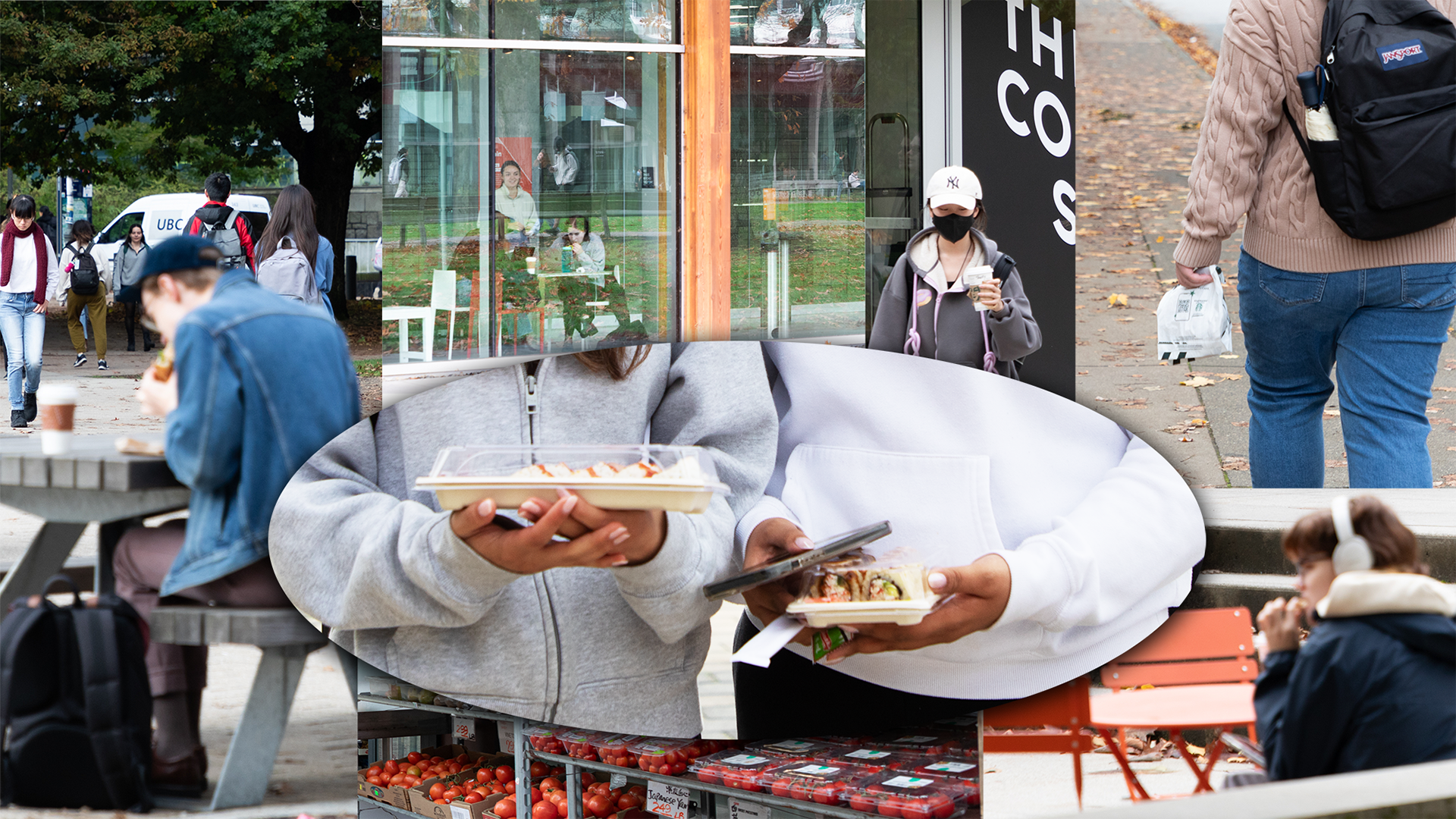It’s lunchtime, and everyone is looking for a place to have lunch. The most budget-conscious are unpacking their homemade meals.
When classes are in session, nearly 80,000 people—students, staff, faculty, and residents—frequent the Point Grey campus every day. And the area’s population has continued to grow.
Where does this crowd eat?
“There are actually about 110 places to eat on campus,” says Sepehr Kamal, who created an online platform, Campus Nutrition, while completing a master’s degree at UBC. That includes about 100 food outlets plus markets, stores and vending machines selling food.
But how do people find out about these places? In recent years, as the area has developed, many places offering food have appeared, but there hasn’t been a clear source of information about them.
Kamal realized during his studies how vital this information is, especially for students from diverse cultures with various dietary restrictions. So, he created a tool to help everyone.
“We saw an opportunity to create a central platform that provides all the information in one place to students, helping them navigate the different options and make informed decisions,” he says.
This is where Campus Nutrition comes in. And this fall, the site has a new feature, Community Reviews, letting students share their opinions on food outlets to guide their peers through the campus food scene.
Another source of information about dining options is the Food at UBC Vancouver website, however it only covers the 30-plus locations operated by UBC. But one benefit of the website is an explanation of meal plans.
How accessible is the food in all these places?
Food prices have surged nationwide. Food prices rose 5.8 per cent in September compared to the year previous. That was down from the 6.9 per cent annual rate in August but a year ago, Statistics Canada reported that food prices had climbed at their sharpest rate in 41 years.
“On the affordability side, it’s shocking how much prices have gone up,” Kamal said. Students are struggling. “So, we’ve focused extensively over the last year and a half on helping them find affordable options, recognizing that’s what they need.”
Before establishing Campus Nutrition, Kamal was unaware of the presence of some low-cost food outlets run by volunteers on campus. He mentions Sprouts and Agora Café, which offer ready-to-eat food, plus the Food Hub market. “Those are three places where students can find affordable food,” he says.
“As someone who faces food insecurity, I am forever grateful for Sprouts and their volunteers,” says Milada, an arts student in a review on Campus Nutrition. “They are such an amazing organization; their prices are more than reasonable, and if you can’t afford it, you can also opt for their Sprouts card, where they cover it for you.”
“Their food is delicious and comforting,” she writes, “and I love their mission of being sustainable and plant-based.”

Dahlia, a land and food systems student, writes that Agora is her favourite spot to get lunch and study. “Everything is really affordable. There are also tons of vegetarian options, and the baked goods are always super fresh.”
Food prices have not only risen in restaurants but also in grocery stores, but preparing meals at home remains the least expensive option. Julia Watkins, a third-year dietetics student, offered tips that residents and students can use to save money when buying and preparing food.
She recommends store flyers and apps such as the Flipp app. It pulls together flyers from different stores by location. “You can compare prices and see where the cheapest place to shop is,” she says. Watkins also suggests buying in bulk and preparing meals for an entire week.
Clara Buchinski, a Food, Nutrition, and Health student, wrote a blog post on the Campus Nutrition website comparing prices at five UBC-area grocery stores. “Food Hub Market came out on top as the most affordable.” She says the average price was 27 per cent lower than No Frills, which ranked second for grocery bargains.
What about healthy food?
For a healthy diet, Julia emphasizes the importance of balance, following the model used by Canada’s Food Guide. But for stressful periods, such as exam time, “Eat the things that make you happy,” Watkins says, and make sure to drink a lot of water. “That’s essential for overall body function and a clear mind.”
Given high food prices and the limited time everyone has to think about what to cook, there is clearly a need for more places with affordable food.
Kamal says there were protests last year about the lack of affordable food on campus. “Honestly, there haven’t been any new developments this year,” he says.
Watkins agrees that there’s obviously a need for more affordable food on campus. “Maybe UBC needs to step in and provide more affordable food options.”
ADA BUCUR IS A CAMPUS RESIDENT, POSSESSES A GRAPHIC DESIGN DIPLOMA, A PHOTOGRAPHY CERTIFICATE, AND OVER TWO DECADES OF JOURNALISM EXPERTISE GAINED IN HER NATIVE ROMANIA.
(CORRECTION – A previous version of this story wrongly described the Food Hub Market as “a grocery store exclusively for students”. The market is in fact available for all members of the public.)
Sources:
Campus Nutrition – https://campusnutrition.ca
UBC Food Page – https://food.ubc.ca
Flipp – https://flipp.com
Statistics Canada, Consumer Price Index, September 2023 – https://www150.statcan.gc.ca/n1/daily-quotidien/231017/dq231017a-eng.htm?indid=3665-1&indgeo=0
Clara Buchinski blog post – https://campusnutrition.ca/blog/news/we-compared-prices-at-5-grocery-stores-around-ubc-heres-how-you-can-save-up-to-48

